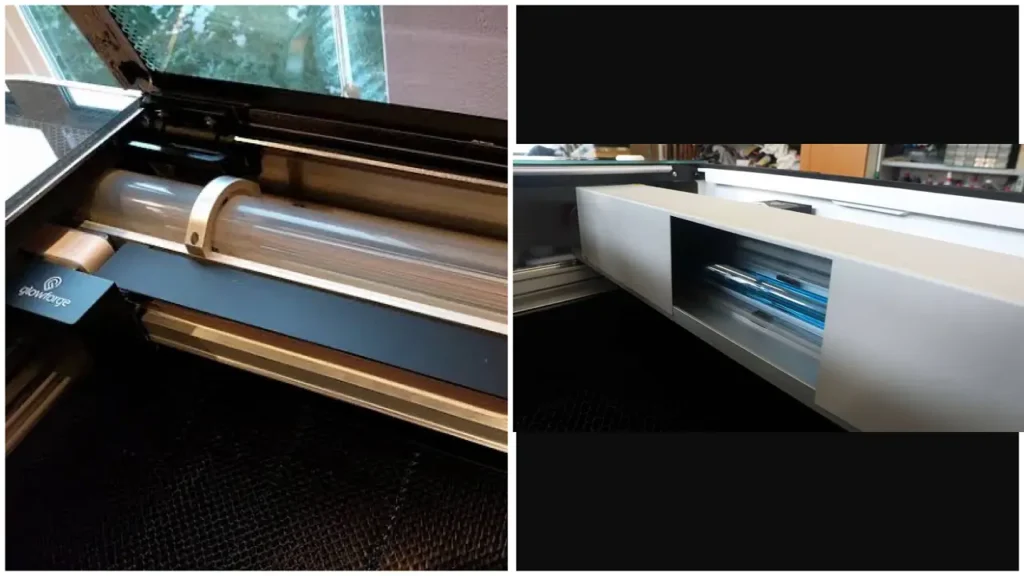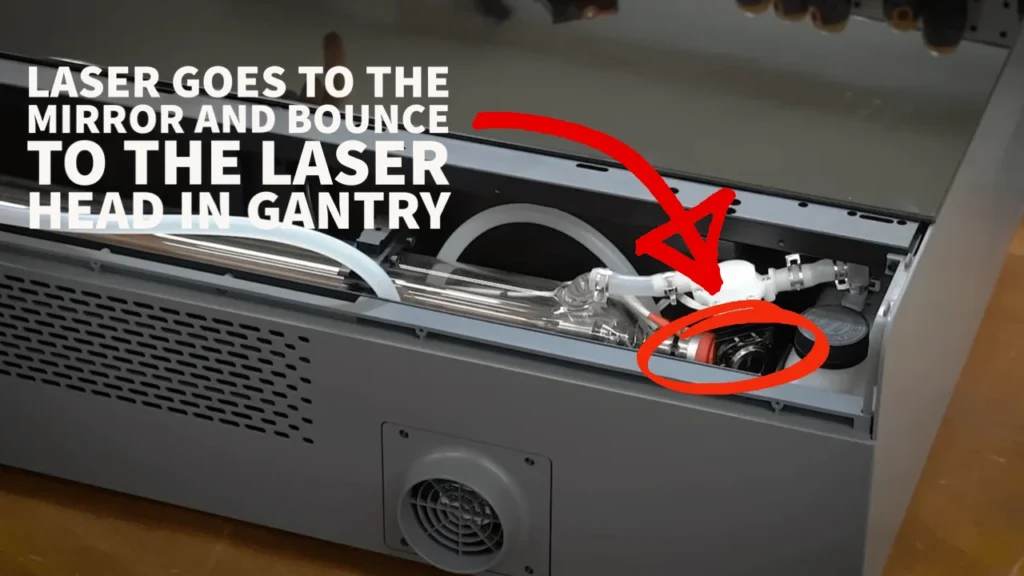Join Workshops
Physical Address
304 North Cardinal St.
Dorchester Center, MA 02124
Why Galvo Laser is faster than X-Y Axis Lasers?
Galvo lasers use galvanometer mirrors to direct the laser beam instead of moving the laser head within X-Y axis.
Since the galvanometer mirrors are computer-controlled, the laser engraving process becomes faster and more accurate than the traditional lasers.
Notably, the galvanometer mirror movements reduce the need to travel the entire laser head within the gantry. These are the primary reasons why the galvo lasers are impressively faster than the traditional lasers.
How galvo laser system operate?
In galvo lasers, the computer control system operates the movement of the laser beams by controlling galvanometer scanners, mirrors, and servo motors.
Here’s how the entire galvo laser system works:
First, the laser generates a beam and directs it to the galvanometer scanners.
After the laser beam hits the first X-axis mirror, the system adjusts the beam’s spot size horizontally and sends it to the Y-axis mirror for its vertical accuracy. (this process is called deflection).
The servo motor fine-tunes the mirror positioning to get the desired precision as per the software dictation.
After both the X & Y axis mirrors are done with their positioning accuracy, the laser beam then goes to the F-theta lens that delivers the laser focus to the material.
In a nutshell, the galvo laser system works with mirrors, which are controlled by the servo motors and the F-theta lens makes the final laser output onto the material’s surface.

A perfect example of galvo laser could be the ComMarker’s B4 fiber laser that engraves metal at a speed of around 15000 mm/s.
Galvo laser machine vs Traditional X-Y Axis laser
In short, galvo lasers are expensive, faster, and more efficient than the traditional X-Y lasers. Galvo lasers are also expensive and open to advanced software integration.
Here’s a quick side-by-side comparison of both laser types:
| Galvo Laser | Traditional Laser | |
| Laser direction | Laser hits the material with assistance of mirror and servo motors | Laser head (the beam generation point) travels through the gantry within the X-Y axis |
| Speed | Galvo lasers are faster as the laser beam does not want any movement of the laser diode | Traditional X-Y lasers comparably slower than the galvo lasers since a lot of mechanical movement slower the process |
| Complexity of work | Galvo lasers are suitable for complex designs for its computer controlled error-free laser positioning | Traditional lasers may not be suitable to handle complex works, mainly due to mechanical movements. However, such lasers works great for simple designs |
| Cost | Galvanometer lasers are expensive | Traditional lasers are cheaper than galvo lasers |
| Use of lens | Galvo lasers use F-theta lens that ensures better precision and focal accuracy. It directly reduces error and operational losses. | Traditional lasers do not uses F-theta lens which is why it cannot become faster like the galvo |
| Technology integration | Galvo lasers are open to advanced software integration | X-Y lasers are limited to a few software integration and automation |
We tested between both lasers here’s the performance summary:
Galvo lasers such as the xTool F1 Ultra operate at a speed of 10,000 mm/s which is 600% higher than the traditional lasers. So, a wood engraving that requires an hour with X-Y lasers can be done within a couple of minutes.
With the X-Y lasers, it is almost impossible to perform 3d engraving or marking on curved surfaces. However, galvo lasers use an F-theta lens to adjust the focal accuracy as per the precision and the Z-axis distance.
More importantly, galvo lasers have almost zero chance of material wastage. This is a significant factor if you are considering engraving someone’s exceptional and expensive items like jewelry or a handmade leather pouch.
Application of galvanometer technology
A galvanometer is not any particular laser but a mechanism to control the laser beam.
A galvo laser can be a diode laser, CO2 laser, or even a fiber laser.
If you are a laser enthusiast, you may see that the Glowforge or the OMTEch laser machine has a laser tube on the top of the gantry that travels around the X, Y coordinates.

However, the P2 laser machine from the Makeblock (xTool) changed the mechanism by placing the laser tube on the back of the machine and directing the laser beam with the help of mirrors.
Well, that is not the modern galvo laser like the F1 ultra but was an example of integrating the galvo technology into the traditional laser machine.

Galvanometer technology do not affect the power or the precision of laser. The technology simply uses computer-controlled mirrors to direct laser beam in a faster way.
In summary, galvo laser machine is suitable for high-speed marking & engravings such as serial number marking, marking many pieces of metal items, engraving jewelry etc.
On the flip side, traditional lasers are suitable for large engraving and cutting works such as wood engraving, slate engraving and making projects with multi-layered laser works.



